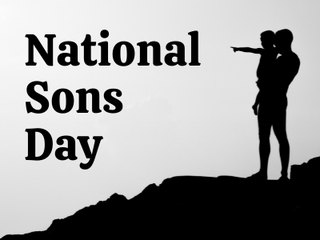There are 12 months and 365 days in a year as per the Gregorian Calendar:
- January: January is the first month and has 31 days
- February: February is the second month and has 28 days or 29 days in leap years
- March: March is the third month and has 31 days
- April: April is the fourth month and has 30 days
- May: May is the fifth month and has 31 days
- June: June is the sixth month and has 30 days
- July: July is the seventh month and has 31 days
- August: August is the eighth month and has 31 days
- September: September is the ninth month and has 30 days
- October: October is the tenth month and has 31 days
- November: November is the eleventh month and has 30 days
- December: December is the last month of the year with 31 days
January
The name January has been derived from Janus, the Roman god of beginnings and endings. January was an important month back in ancient Rome. It kick-started the agricultural season so all the farmers hoped and prayed for a good harvest.
Many important holidays and celebrations take place during this month. This includes New Year's Day, Martin Luther King Jr. Day, Chinese New Year, and Inauguration Day. January is the time when people make new resolutions and fresh starts.
Speaking of the weather, the countries in Northern Hemisphere usually experience winter during this time while it is the peak of summer in the Southern Hemisphere.
February
This is the shortest month of the year. The term February is derived from the Latin word 'Februum' meaning purification. This was because it was the time for purification festivals such as 'Februalia' in ancient Rome.
February is also the month of love as Valentine's Day is celebrated on February 14. Some other important celebrations and observances during this month include Groundhog Day, President's Day, Mardi Gras, and Black History Month .
It is generally winter in the Northern Hemisphere and summer in the Southern Hemisphere.
March
The word March comes from Mars who was the Roman God of War. During the Roman age, March marked the start of the agricultural season and preparations were made for military campaigns.
Important celebrations and holidays worldwide in March include Women's History Month, St. Patrick's Day, International Women's Day, and Holi.
While March is usually associated with springtime, renewal, and new growth in the Northern Hemisphere, it marks the beginning of autumn in the Southern Hemisphere.
April
April is derived from the Latin word 'aperire' which means to open. It is an appropriate name since it is the time of spring when flowers open or bloom. However, it is only springtime in the Northern Hemisphere as the Southern Hemisphere experiences the start of winter during this period.
Important celebrations in this month include April Fool's Day, Earth Day, National Poetry Month, and Passover. This month is also associated with the celebration of Easter.
May
This month got its name from Maia, the Greek Goddess of fertility and growth. In ancient Rome, May was a month of celebration and it was associated with the blossoming of flowers, the growing of new crops, and new life.
Many important celebrations take place in May. This includes May Day, Cinco de Mayo, Mother's Day, and Memorial Day.
May is a period of transition from spring to summer in the Northern Hemisphere. In the Southern hemisphere, May marks a gradual change from autumn to winter.
June
June got her name from Juno, the Roman Goddess of marriage and childbirth. In ancient Rome, it was believed that June is the right time for couples to get married as they would be blessed with happiness and success.
Important celebrations in June include International Father's Day, Juneteenth, World Environment Day, and Flag Day.
It marks the beginning of summer in the Northern Hemisphere and the beginning of winter in the Southern Hemisphere.
July
July is named after the Roman emperor Julius Caesar. Previously known as Quintilis, the month was renamed in 44 BC to honor his birthday in July.
Important celebrations that take place in July are Independence Day in the United States, Canada Day, Bastille Day, International Friendship Day, and Eid-al-Adha.
It is usually warm and sunny in July in the Northern Hemisphere. However, rain is also common in certain regions such as Southeast Asia and India. On the other hand, it is winter in the countries located in the Southern Hemisphere.
August
August was originally called 'sextilius' (the sixth) because it was the sixth month in the old Roman calendar. It was renamed August in 8 BCE to honor the first Roman emperor Augustus Caesar. Please note that Augustus was not his name but the title of the emperor meaning 'the great'.
Important holidays in August include National Women's Equality Day in the US, International Youth Day, World Humanitarian Day, and Indian Independence Day.
It is generally summer and warm in the Northern Hemisphere and cold and dark in the Southern Hemisphere. However, it can also be warm and humid in certain parts of Asia in the Northern Hemisphere.
September
September is named after the Latin word 'septem' meaning seven. This was because this was the seventh month in the old Roman calendar. Usually, schools and the new academic year in the US start this month.
Many important celebrations take place in September. This includes Labor Day, Jewish New Year (Rosh Hashanah), Oktoberfest, and International Literacy Day.
September marks the beginning of autumn in the Northern Hemisphere and spring in the Southern Hemisphere.
October
This month derives its name from the Latin word 'octo' which means eight. With the introduction of twelve months in the Julian calendar, October became the tenth month.
October is also known as the 'spooky season' because Halloween is celebrated in this month. Besides this, many other important holidays and celebrations take place this month, including Columbus Day, and Diwali (the Hindu festival of lights). October is also recognized as breast cancer awareness month.
It is the time of fall in the Northern Hemisphere when trees shed leaves. In the Southern Hemisphere, on the other hand, flowers bloom and the weather becomes warmer in the springtime.
To know more, read October: Why It Is Not The 8th Month.
November
This month got its name from the Latin word 'novem' which means nine. This was because it was the ninth month in the original Roman calendar.
Some of the important holidays in this month are All Saints' Day, Veterans Day, Remembrance Day, and Thanksgiving Day. In the Northern Hemisphere, it is usually late Autumn while it is late spring in the Southern Hemisphere.
Read November: Exploring the 11 Month's Significance to know more.
December
Similar to the last four months, December month derived its name from the Latin word 'decem' meaning ten.
Many important celebrations take place in December worldwide. This includes Christmas, Hanukkah, Boxing Day, and New Year's Eve. It is winter in Northern Hemisphere and summer in the Southern Hemisphere.
Read Discovering December: The 12th Month Of The Year to know more about December.

You might like to read about:











